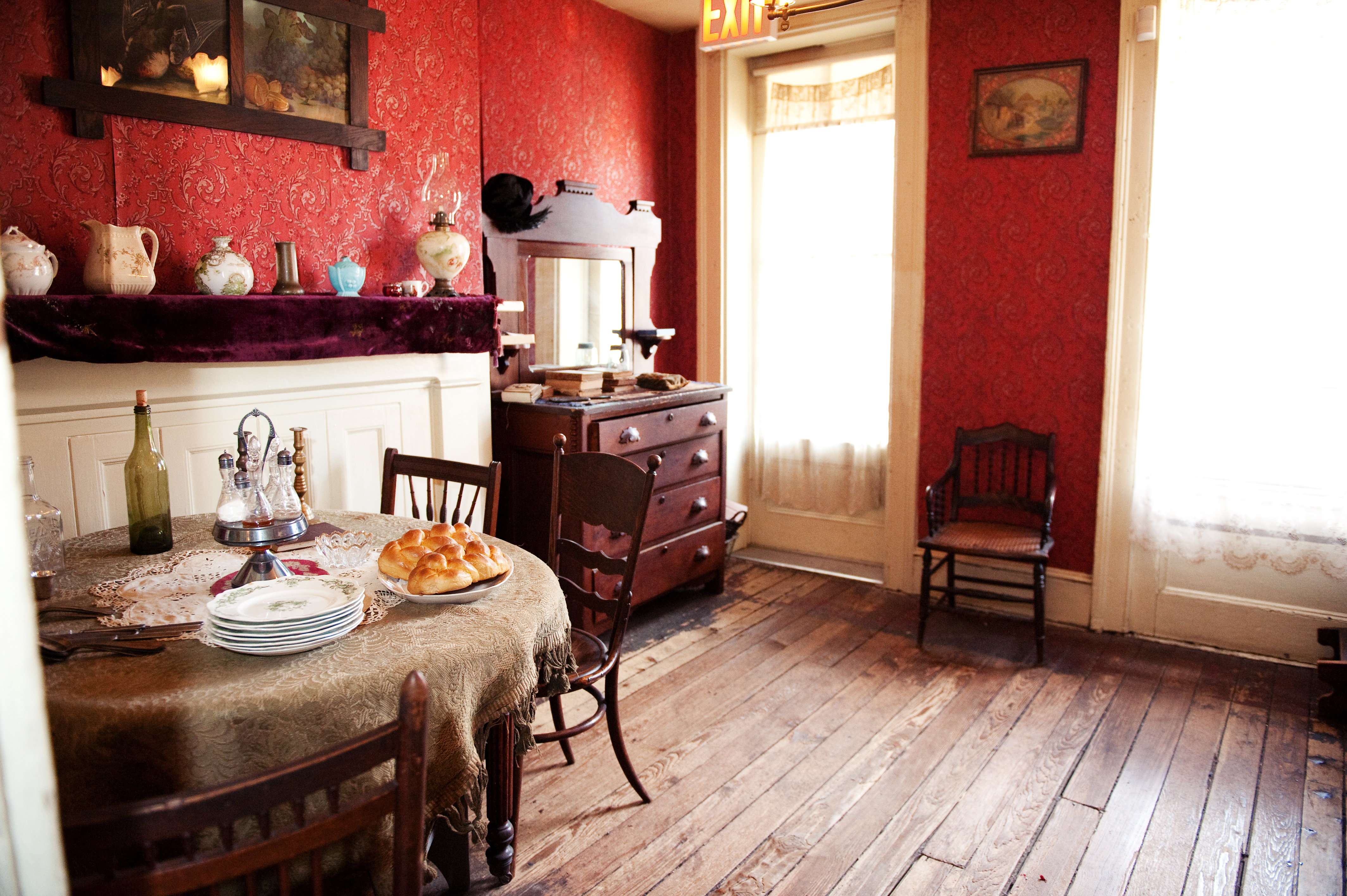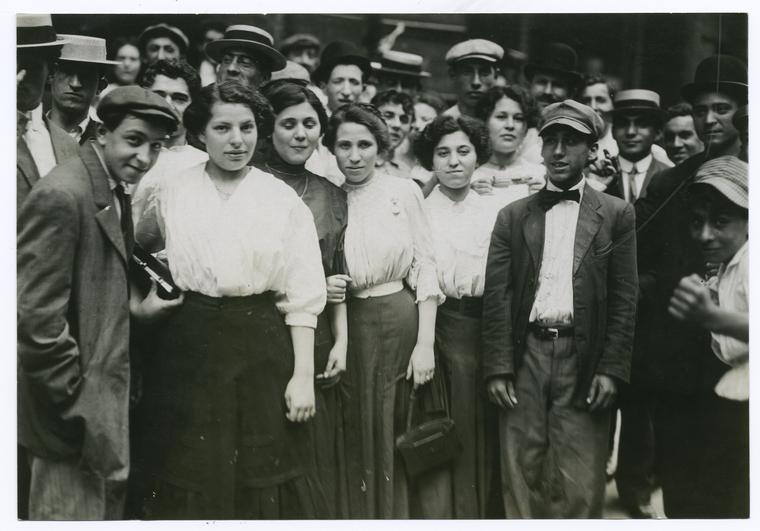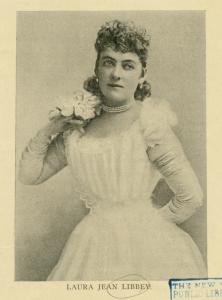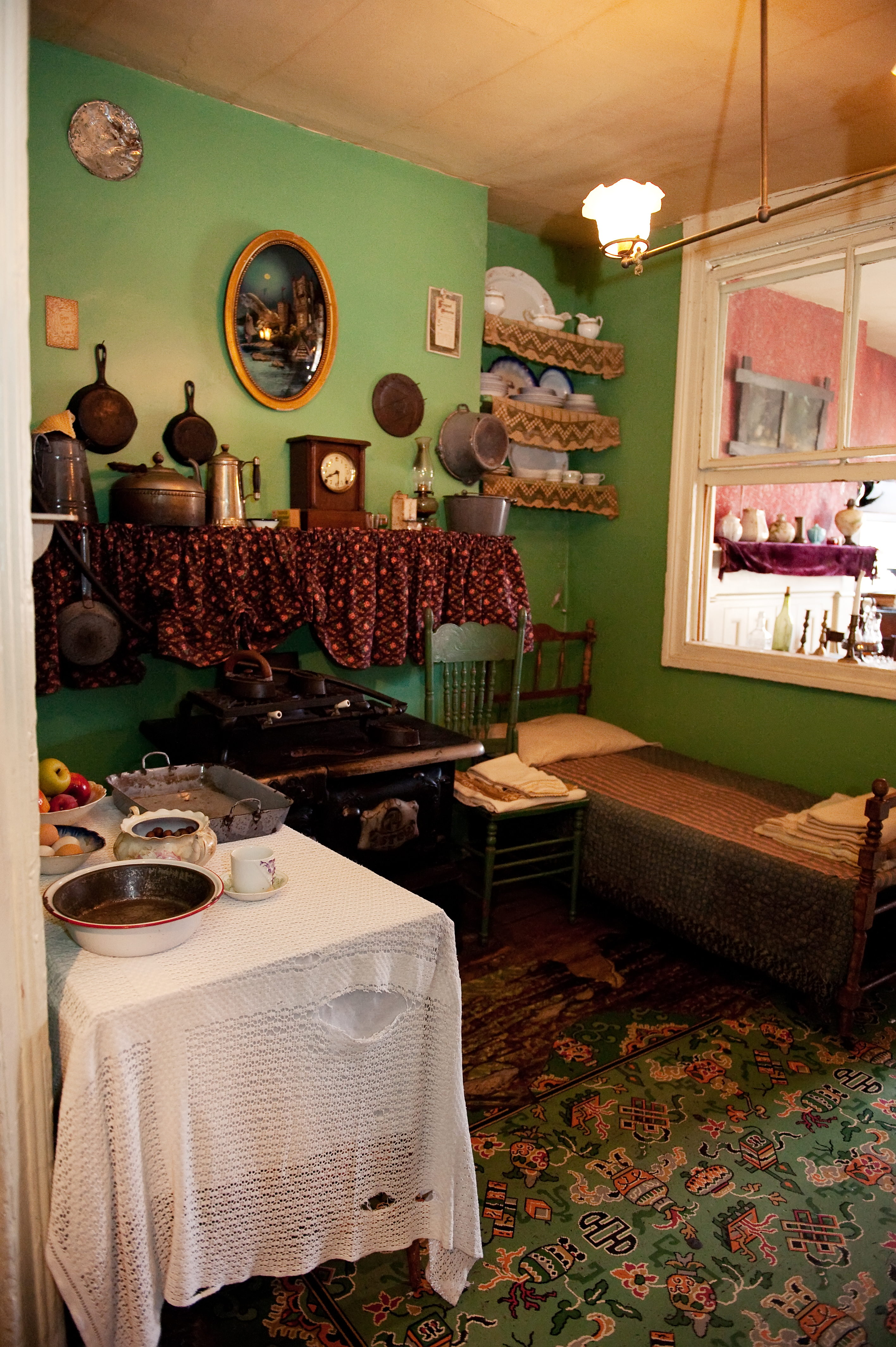Blog Archive
Factory Girls and Dime Novels

The Rogarshevsky's sitting room was also where some of the family slept and ate. The two books on the buearu, in the back corner of this photograph, may have been the best escape for Bessie and Ida.
One of the families who lived at 97 Orchard Street were the Rogarshevky’s. The two oldest Rogarshevksy daughters, Ida and Bessie, were 17 and 16 in 1910, the year the family moved to Orchard street. Unlike most American teenagers today, Bessie and Ida worked full-time to support the family. We believe that they worked long hours in a garment factory during the day and that they slept together on a folding cot in the kitchen. Their routine would have been tiring and would have left little time, or space, to escape their responsibilities. No wonder they wanted a little romance in their lives!
Contemporary romance heroine, Carrie Bradshaw of the TV show Sex and the City, once claimed that when she first moved to New York, she spent her money on Vogue rather than dinner because “it fed me more.” This fictional comparison at first seems an unlikely one but in some ways this is exactly what these factory girls did. By skipping lunch or performing small errands for their co-workers to save money the girls managed to scrape together the ten cents necessary to carry them into the fantasy world of the romance novels in which their daydreams came true.
There are two books on the bureau in the corner of the sitting room of the restored Rogarshevsky apartment. These books might seem innocuous to us, but to Ida and Bessie’s mother, Fannie who probably could not read English, they might have seemed like an invasive species. These books are actually “dime novels” – so called because they cost ten cents- today we could classify them as romance novels.
Ten cents was a lot of money for the young women who were only making around $5 or $6 a week and who were expected to turn most of this money over to their mothers to help keep the family afloat. Young women like Ida and Bessie would have relished small opportunity to participate in American culture through reading and discussing these dime novels with the other woman in their factories. Ida and Bessie had been living in the United States for about 9 years before they moved into 97 Orchard. They would have perhaps begun to feel much more like American than their mother would have liked.

Jewish factory workers in New York City photographed around the time of the dime novel's popularity. While factory work was taxing it did allow some socializing among the workers. Photo courtesy of the New York Public Library.
By reading the books, the young women in the factories could learn about American trends, habits and idioms. The stories were tailored just to suit the hopes of these working girls. The stories often told of a poor girl who was noticed and romanced by a wealthy man and then married to him to live happily ever after. Young women read these stories during their short breaks at the factory. In contrast to the mindless, repetitive tasks they were forced to perform, the comparatively intellectual task of using their relatively new English Language skills to read and analyze a story was a great treat. Many of the girls used these novels as an incentive and a tool in learning English. So many of the young women working in factories read the novels that they would spend as much of the day as possible discussing the plots, characters and outcomes just like actual gossip.

A 'romantic' portrait of Laura Jean Libbey (1862-1924), a prolific author of the kind of popular dime novels read by young factory workers. Photo courtesy of the New York Public Library.
Historian Nan Enstad in her volume Ladies of Leisure, Girls of Adventure, makes clear just how important these characters were, “[Dorothy] Richardson worked in factories but had a middle class background […] When the fact that she has never read a dime novel romance was revealed one worker cried in surprise and disgust, ‘Oh, mama! Carry me out and let me die!’ Another clutched her throat and cried, ‘Water! Water! … I’m going to faint!’ At this point both workers gave way to laughter at Richardson’s expense. They later hastened to help her overcome her deficiency” (57 Ensted).
Next time you find yourself discussing the plot of Downton Abbey, or Sex and the City, with your coworkers just imagine Ida and Bessie trying to save up pennies to catch-up on American culture and participate in the “dreaming” part of the American dream.
– Posted by Julia Berick
